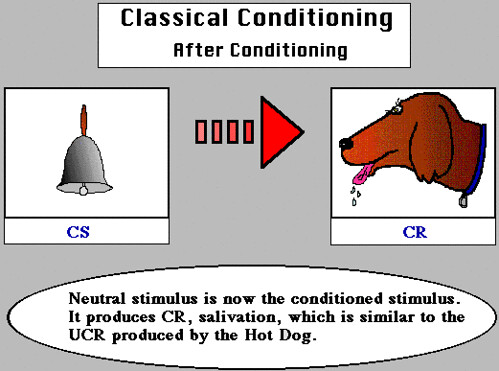
Before Conditioning
In order to have classical or respondent conditioning, there must exist a stimulus that will automatically or reflexively elicit a specific response. This stimulus is called theUnconditioned Stimulus or UCS because there is no learning involved in connecting the stimulus and response. There must also be a stimulus that will not elicit this specific response, but will elicit an orienting response. This stimulus is called a Neutral Stimulus or an Orienting Stimulus.

During Conditioning
During conditioning, the neutral stimulus will first be presented, followed by the unconditioned stimulus. Over time, the learner will develop an association between these two stimuli (i.e., will learn to make a connection between the two stimuli.)

After Conditioning
After conditioning, the previously neutral or orienting stimulus will elicit the response previously only elicited by the unconditioned stimulus. The stimulus is now called a conditioned stimulus because it will now elicit a different response as a result of conditioning or learning. The response is now called a conditioned response because it is elicited by a stimulus as a result of learning. The two responses, unconditioned and conditioned, look the same, but they are elicited by different stimuli and are therefore given different labels.
No comments:
Post a Comment